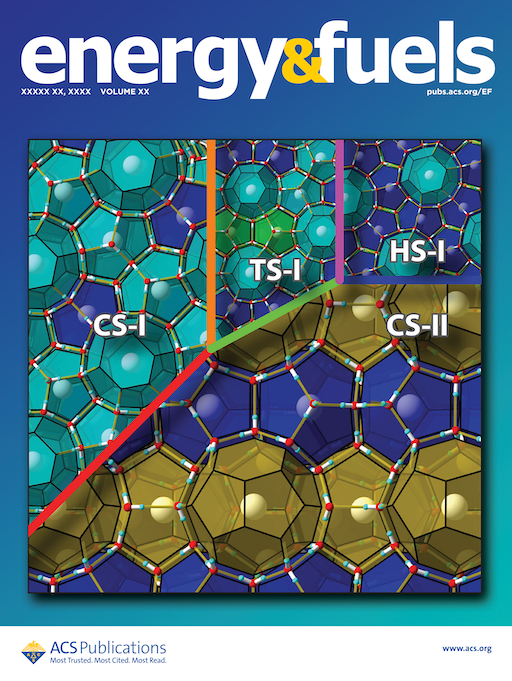Matsumoto, M. & Tanaka, H. Structure Selectivity of Mixed Gas Hydrates and Group 14 Clathrates. Energy & Fuels (2022) doi:10.1021/acs.energyfuels.2c01337
以前の論文(MT2011, MT2012)で、包接水和物の結晶構造が選ばれる規則性を検討しました。その手法を、新たに混合ガスの包接水和物と14族クラスレート化合物に適用しました。前者では、なぜガスを混ぜると結晶構造が変化する場合があるのかを、俯瞰的に説明する方法を提示しました。また、後者では、シリコンなどの14族元素のクラスレート化合物でも、包接水和物と同じように限られた結晶構造以外を作るのは難しいことを示しました。
Abstract
混合ガスハイドレートと14族クラスレートの構造選択性を、統計力学的理論とフランク・カスパー相のトポロジカル拘束に関する経験則に基づいて検討した。最も安定な構造は、クラスレートの3つの正準形態の化学ポテンシャルの違いを独立変数とした一般化相図によって明らかにされる。個々のゲスト種を取り込んだ最も安定な構造は、この一般化された位相図上の化学ポテンシャルの差の軌跡によって評価される。この方法は、14族元素クラスレートの一般化された相図と混合ガスハイドレートの相挙動という2つの応用により、幅広い熱力学的条件下でクラスレート化合物のおおまかな相挙動を推定することが可能であり、単純で強力な方法であることを示す。本理論により、マイナーな構造をも包含する構造選択性に敏感に影響する相変化剤の提案がなされた。(DeepLによる概要の機械翻訳)
The structure selectivity of mixed gas hydrates and group 14 clathrates is examined on the basis of statistical mechanical theories and the empirical rule on the topological constraint of the Frank–Kasper phases. The most stable structure is revealed by the generalized phase diagram, where the chemical potential differences in the three canonical forms of clathrates are independent variables. The most stable structure incorporating individual guest species is evaluated by the locus of the chemical potential differences on this generalized phase diagram. We show that the method developed here is simple but powerful to estimate roughly phase behaviors of clathrate compounds in a wide range of thermodynamic conditions, which is demonstrated by two applications: the generalized phase diagram of group 14 element clathrates and the phase behavior of mixed gas hydrates. The present theory leads to proposals of phase change agents, of which the addition sensitively influences the structure selectivity, encompassing even minor structures.
